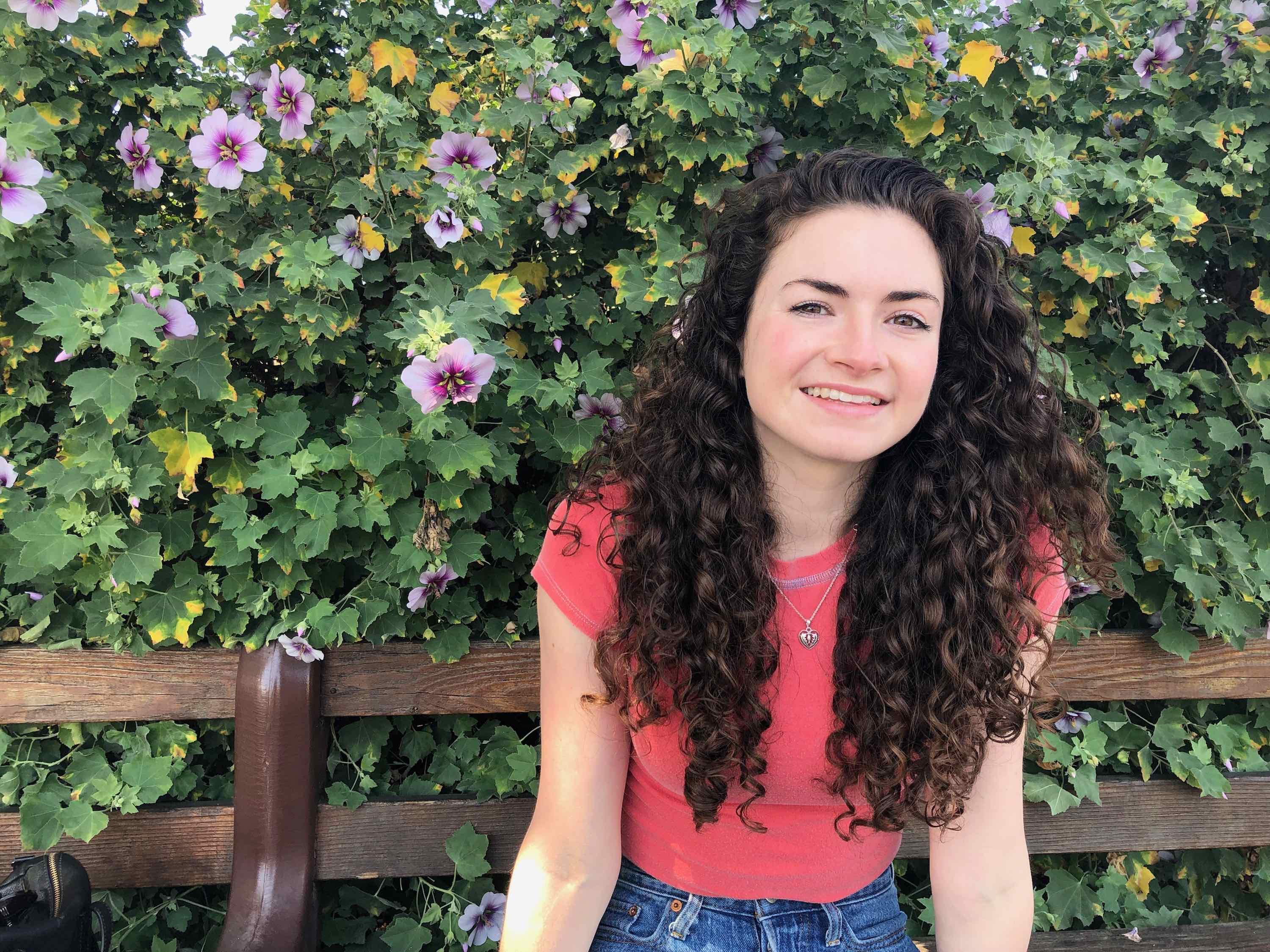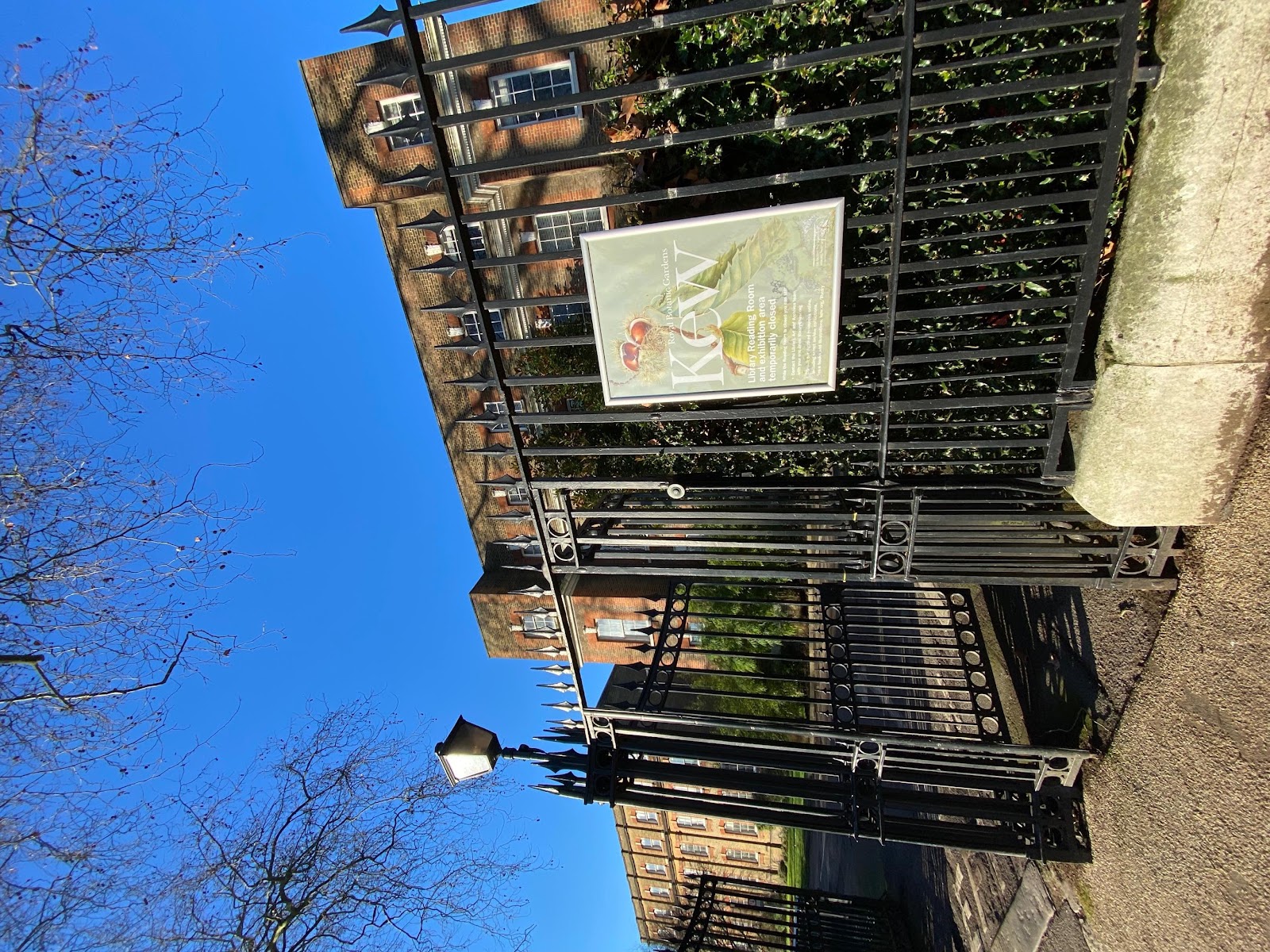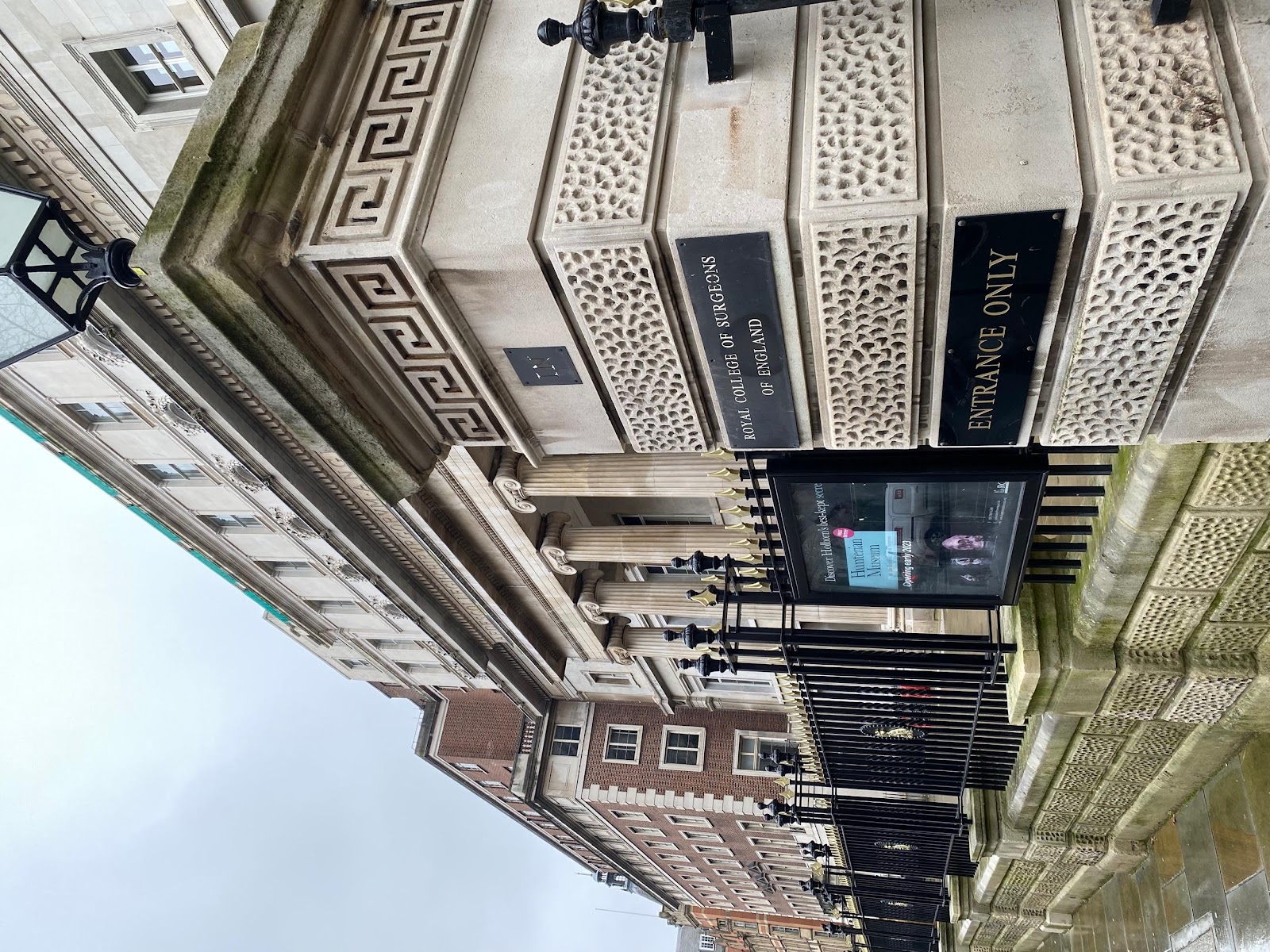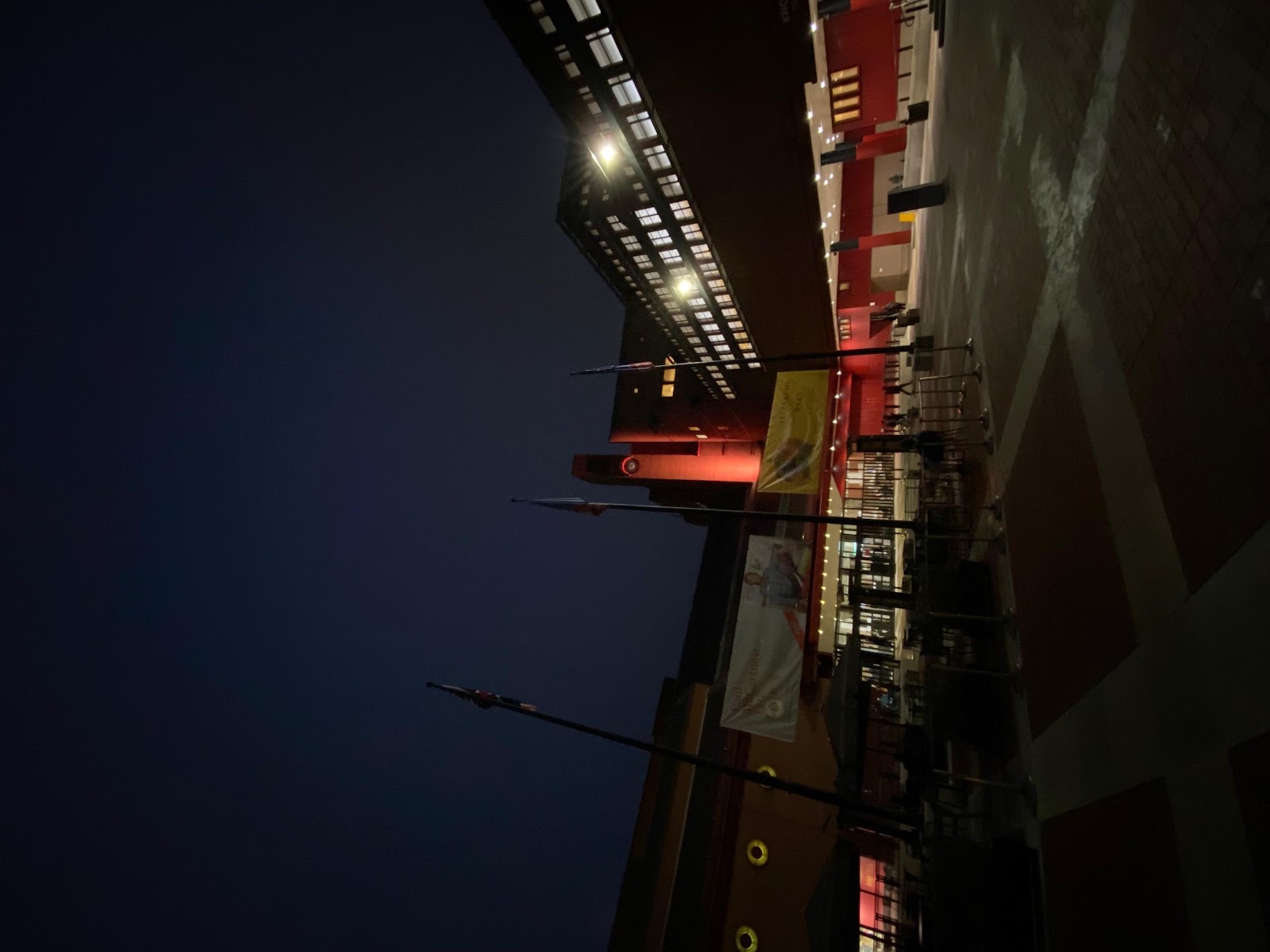Jocelyn Zimmerman
Major: History
Guiliano Fellow, Spring 2021 
Botany, Surgery, and the East India Company: Archival Research London, January 2022
With the support of the Guiliano Fellowship for Graduate Students, I spent two weeks in London, England this January 2022. While there, I visited three archives: Kew Botanical Archives, the College of Surgeons, and the British Library. Broadly speaking, my goal was to better understand the nature and role of the eighteenth-century “botanist-surgeon” and the training he would have received before leaving Britain for the East India Company or elsewhere. While in the archives, I gathered a plethora of information related and in addition to this principal objective, making for an incredibly worthwhile trip.
For context, my dissertation project uses the 1774-75 East India Company “discovery”
mission to Tibet to explore the centrality and diversity of sexual alterity in eighteenth
century British colonialism. The Guiliano Fellowship was intended to fund one chapter
in that endeavor, wherein I explore the connected projects of botany and social ethnography,
both of which were present in discovery missions and both of which used rhetorics
seeped in polygamy. Botanists used Linnaean taxonomy to classify plants on a scale
from monogamous to polygamous, and ethnologists classified peoples around the globe
as either monogamous or polygamous. This visit to London supplements research I did
last summer with a more detailed, nuanced picture about the connected botanical and
medical sides of discovery missions. Who could botanize? How did botanizing work?
How were “botanist-surgeons” trained? Did Company surgeons rely solely on polygamous
Linnaean taxonomies? These questions guided my trip this January and are key to understanding
the training and society of botanist-surgeon Alexander Hamilton as well as why Governor-General
Hastings sent a botanist-surgeon on the discovery mission to Tibet at all. 
Kew Botanical Archives:
At the Kew Botanical Archives, I had access to both John Sims Letters and the papers of Joseph Banks. Sims was a botanist-physician, educated both at Oxford and Edinburgh Universities, who edited Curtis’ Botanical Magazine. Banks was the botanist who accompanied Captain James Cook on his first voyage around the world and is well-known for having popularized Linnaean taxonomy and Linnaean’s mission to catalogue all of the plant species in the world. Combined, I mulled over hundreds of letters addressed to these influential botanists written by botanists, explorers, family, friends, University professors, government officials, and more. These letters inform the types of people who were in contact with them or/and involved in the global botanizing project as well as their shared botanical culture, language, and process. Many letters indicate that botanists abroad could only catalogue and truly understand a plant if it was in bloom, as Linnaean taxonomy relied on counting the number of pistils and stamen (male and female “parts”). In 1797, Thomas Guest wrote Sims a letter from Sierra Leone wherein he expressed his frustration that “the botanizing proceeds but slowly,” as the plants around him had not yet bloomed. This letter, among others, indicates howbotanists botanized in the eighteenth century.
Various letters also indicate controversy over who could and could not botanize. In 1773, “Theo. Falconer” wrote a letter Banks wherein he argued that the notes of a “Scotch traveler” were “worth nothing” because their proximity to barren landscapes gave them no understanding of plant diversity. This comment reflects that Scottophobia was alive and well, even in the sciences and their associated ‘discovery’ missions. Yet, Banks also received and exchanged letters and plant specimens with John Hope, a professor at Edinburgh University. In fact, Hope sent Banks a variety of plants from his contacts in Jamaica, South Carolina, and Georgia throughout the 1770s and, in 1782, even elected Banks a “Honorary Fellow” at Edinburgh University’s College of Physicians. These few examples are just a small indication of the usefulness of Banks’ letters for understanding the world of botanizing and many of its national and global nuances—including institutional connections between botany and the human sciences as well as Scottophobic gate-keeping. After all, the three key figureheads behind and on the East India Company Tibet mission—Governor-General Hastings, George Bogle, and Alexander Hamilton—were all Scottish.

Royal College of Surgeons, London:
London’s College of Surgeons offered the opportunity to investigate how botanist-surgeons were trained, whether the institution’s connection to the East India Company was as close-knit as some secondary sources have indicated, and whether the College was committed (or tied in any way) to Linnaean taxonomy. I also needed to know whether Alexander Hamilton—the botanist-surgeon who accompanied George Bogle on his discovery mission to Tibet—graduated from that institution. Before this trip, I had read and been told that most surgeons in the East India Company during and prior to the 1770s were trained at the College of Surgeons. During my first day at the College of Surgeons, however, I carefully read through the Exam Books from 1745-1783 to no avail: Alexander Hamilton did not attend the College of Surgeons in London. Despite that disappointment, the College archive provided a clearer idea of who could be surgeon, how surgeons were examined, and what it took to become a surgeon abroad.
I consulted a variety of documents including the Exam Books, Bye-Laws of 1748 and 1782, the College’s Letter Book, Exam Account Books, Lists of Company Men, Court of Assistants Minute Book, and Papers Regarding the Teaching and Practical Work of Anatomy. The bye-laws of the company emphasized morals and the ‘goodness’ of the Company of Surgeons. Per the bye-laws, students could receive or give presents to their examiners, and members of the company could not dissect human bodies in “indecent” ways. The Letter Books revealed several general themes of correspondence, including how seriously they took the term ‘surgeon.’ In more than a handful of instances, individuals practicing surgery without any sort of qualifications (or better yet individuals who failed the examinations) were threatened with persecution if they did not stop practicing or refused to take an exam. Exams were administered orally with at least three faculty in attendance and were typically administered to groups of students, though students also had the option to pay extra for a private examination. Interestingly, students had to have good vision to pass their exams—faulty eyesight was seen as a viable reason to fail someone. In short, the Company of Surgeons archives provided me with vibrant and valuable insight into the world and culture of surgeons and surgery in eighteenth-century London.

The British Library:
The British Library also proved incredibly valuable. In particular, it gave me a better understanding of Company culture in Calcutta, how people in Britain interacted with and perceived that culture, and where medical men were placed in both of those environments. While there, I focused mostly on letters from ‘Home’ written to the East India Company as well as letters from East India Companymen written to family and friends at home. The former included a series of letters from John Totty in 1775, one of which was addressed “to the [East India Company] Court” wherein he “defend[ed] his conduct during his examination to become a surgeon,” and included “certificates and other related papers to prove his knowledge of medicine” (IOR/E/1/59, 21-34v). The examining surgeon, among others, got involved and wrote letters in defense of their position a few months later. East India Company took the role of ‘surgeon’ seriously despite the ability of individuals to forge surgeon credentials.
In addition to letters pertaining to surgeons, their necessary qualifications, and role in the Company, I also read a lot of letters written by Company men that detailed the family, friends, or servants, who they wanted to accompany them to India or, in the case of servants,those they wanted to send back to India once they had arrived safely in Britain. A few, too, also detailed the illegitimate children of Company men and their ‘Bebees’ (or, native wives), which is useful for my chapter(s) that discuss unofficial polygamy in the Company. Eighteenth-century Scotsmen also included supernatural allegory in their letters, referring to South Asian women as either ‘nymphs’ or ‘harpies,’ which is useful for my chapter on the ways in which Scottish iterations of the supernatural facilitated cultural commensurability within Company culture. In other words, my time at the British Library aided my research towards the chapter I had intended to work on during this archival visit—on botany, surgery, and the East India Company—as well as research for other chapters!
Thanks to the Guiliano Fellowship for Graduate Students I am much closer to finishing my dissertation research. With their financial assistance I was able to consult an array of archival documents that bolster and nuance my interlocking arguments about botany, surgery, and the East India Company. This research trip has revealed a complex picture of eighteenth-century British colonial worlds where people could be botanists, surgeons, diplomats and actors all at once; and where increasingly rigid boundaries—professional and national—were traversable. Thanks to the Guiliano, I will be presenting a chapter of my dissertation at the Eighteenth-Century Scottish Studies Society’s Conference in July 2022 as well as, hopefully, another portion at the North American Conference for British Studies in the fall.
The Guiliano Global Fellowship Program offers students the opportunity to carry out
research, creative expression and cultural activities for personal development through
traveling outside of their comfort zone.
GRADUATE STUDENT APPLICATION INFORMATION
UNDERGRADUATE STUDENT APPLICATION INFORMATION
Application Deadlines:
Fall deadline: October 1 (Projects will take place during the Winter Session or spring semester)
Spring deadline: March 1 (Projects will take place during the Summer Session or fall semester)
Please submit any questions here.
